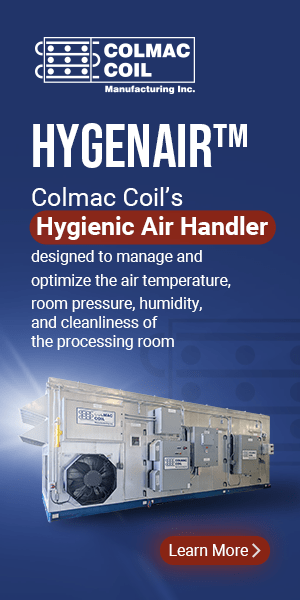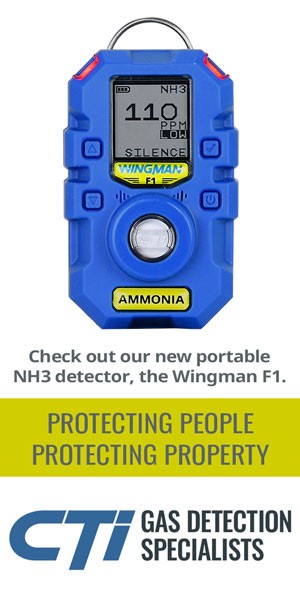IIAR Marked Notable Accomplishments Throughout 2023
OFFICE IMPROVEMENTS
IIAR’s staff and back-office systems keep the association running smoothly and ensure members get the support and resources they need. In 2023, IIAR added two new staff members—a membership coordinator and a conference/meetings expo coordinator. “We’ve doubled our bandwidth for member support,” said Mike Chapman, director of business operations for IIAR. “The new membership coordinator is a direct member facing position who helps with quick resolutions for our members.”
The conference/meeting/expo coordinator assists with meeting and event planning for the Board of Directors and committees and supports many aspects of the annual conference and Expo through planning and coordination of logistics for the event, “The conference is a big event, and there are a lot of moving parts. We’re now spreading that workload, managing tasks to make our overall operations more efficient and effective,” Chapman said.
In addition, IIAR upgraded the association’s management software, which is now in the cloud and has improved functionality and integrations of member resources. “We want to synergize and streamline as much as we can to improve our organizational capabilities and member offerings,” Chapman said.
Throughout the year, staff created new job descriptions, detailed tasks and needs and outlined communications processes. “The goal is to make us more resilient and broaden the knowledge base, so everybody doesn’t have to be a specialist,” Our unique team has an amazing skill set. Still, as we cross-train, we build supporting resources for each other and the organization Chapman said, adding that staff spent time cleaning up email addresses, email groups and distribution lists to ensure proper distribution of IIAR information.
IIAR’s publications have also been streamlined. Previously publications were done by multiple entities. As part of the shift, IIAR will do more demand based printing, saving money and making purchasing materials more efficient.
ORGANIZATIONAL ENHANCEMENTS
IIAR completed several changes to help enhance the organization. These include a new diversity policy and a rebranding. As part of the rebranding, the International Institute of Ammonia Refrigeration became the International Institute of All-Natural Refrigeration.
This was also the first full year IIAR fully marketed the new name for NRF, Natural Refrigeration Foundation. As part of the transition, staff has created a brand standards manual with new logos, tagline, mission and vision. NRF also launched a Google Ads campaign and increased social media marketing on top platforms, including LinkedIn and Facebook.
The association also released a new IIAR video and a new NRF video and updated the websites for both organizations.
NEW MEMBER OUTREACH
Staff has embarked on several projects to attract new members and provide value to existing members. As part of this effort, staff plans to attend, exhibit and speak at other conferences and trade shows, such as ASHRAE/AHR, the Ice Rink Association and others. Attending these conferences will increase IIAR’s exposure and provide valuable education about natural refrigerants.
IIAR’s Condenser magazine has gone fully digital and will provide members and non-members access to future and past issues online. While PDF versions were available in the past, all articles will now be in the cloud, so readers can use their favorite search engine to look for and easily find topics important to the industry. Select Condenser articles will be translated into Spanish for IIAR’s Spanish-speaking members and global partners.
IIAR has also launched a new website devoted to the AIM Act, AIMAct.org and added information about the AIM Act to a dedicated webpage on the IIAR website. IIAR is also near completion of the Refrigerant Evaluator Tool that will be added to the website.
IIAR launched a new chapter in Brazil, legalized with chapter officers and is moving forward with its alliances with the International Institute of Refrigeration in Paris and the North American Sustainable Refrigeration Council. Additionally, IIAR has become an official partner of UNEP’s Cool Coalition Program (UNEP is the United Nations Environment Programme).
“By partnering with IIAR, we strengthen our commitment to sustainable cooling solutions and nature-based approaches. Together, we’ll continue to advance the cause of responsible refrigeration practices and advocate for a greener future,” the UNEP Coalition said in a statement.
MEMBERSHIP ENHANCEMENTS
Throughout 2023, IIAR staff fine-tuned the membership structure to create a more efficient renewal and notification process. Staff are also working to bolster membership and retention. When non-members contact IIAR with questions, for support or other information, the IIAR membership team makes contact and encourages them to consider membership. Staff also reaches out to exhibit space applicants to see if they want to become members.
If existing members don’t renew, the membership team also follows up with them to learn why and see if there is anything they can do to provide additional support.
All IIAR members have access to IIAR Standards, and staff are continuing to educate members on this digital access and have created information on frequently asked questions to provide additional guidance.
The association has also created the Natural Refrigerant Directory, which is a new member benefit where group member companies can provide their contact information, which is then organized by company type, such as manufacturer, end-user, education, etc. Anyone looking for natural refrigeration expertise can use the page as a resource.
ANNUAL CONFERENCE ENHANCEMENTS
The annual conference and exposition is a top priority for IIAR, and staff has taken steps to maximize the educational, networking and fundraising opportunities it creates. The association has implemented an online sales system for exhibit spaces and sponsorship sales for IIAR and NRF.
“This means that now, potential sponsors can select their desired sponsorship for IIAR and NRF and conveniently pay online,” said Yesenia Rector, IIAR’s meetings and international program director. “Also, exhibitors can pay their IIAR invoices for the conference online. These improvements have allowed our sponsors and exhibitors to experience the convenience and time savings of a streamlined process.”
This year’s exhibit hall sold out for the first time. IIAR continues to prioritize prior-year sponsors to select their exhibit space first, followed by prior-year exhibitors before opening exhibit sales to the public. “That said, though, we established an exhibitor ranking system where total prior year conference spend is used to prioritize exhibitors within those groups,” Rector said. “This has enabled a more transparent and orderly process for exhibit space assignments.”
NFR is also moving forward with its Fun Day at the IIAR conference and is holding the golf tournament as well as the second annual pickleball and cornhole tournaments. Proceeds support the foundation’s mission.
The conference also features a Student Day on Wednesday morning, where college/technical school/university students can learn about the Natural Refrigeration Industry and meet with the companies exhibiting at the Expo. The Wednesday Student program introduces the natural refrigeration industry, including an overview of the world’s regulatory landscape and the work IIAR has been doing to ensure sustainability for this industry by reducing global warming and ozone-depleting refrigerants.
This year, and going forward, IIAR will be honoring the work that the committee and the board of directors members have been doing to support its mission by holding a VIP Event dedicated to all these hard-working individuals.
MISSION ACHIEVEMENTS
Research, education, information sharing, and advocacy are critical parts of IIAR’s work. Throughout 2023, IIAR focused on several research projects, including hydraulic shock and CO2 relief headers.
“The IIAR/NRF condensation-induced hydraulic shock research project is intended to further understand the phenomenon of high-pressure shock occurring when hot ammonia gas is rapidly introduced into piping or header sections containing cold liquid ammonia. There have been a few instances of catastrophic failures resulting from CIHS,” said Eric Smith, technical director of IIAR.
The current project builds on several earlier studies that enabled the development of computational fluid dynamic modeling that predicts the circumstances and outcomes of CIHS. This project should help the industry “right-size” hot gas solenoid valves and piping such that when combined with other good design practices, CIHS would be virtually eliminated as a concern.
The use of CO2 as a refrigerant is becoming more widespread. While many technological advances have been made in the past decade, one aspect that is not fully understood is whether dry ice can form when high-pressure CO2 is released into a pressure relief header.
“Some people believe this would never happen, while others believe the opposite,” Smith explained. “The CO2 relief piping research project aims to answer these questions, by studying the geometries, relief conditions, pressure losses, heat transfer, and energy transitions of CO2 as it passes through relief valves and is routed through relief headers.”
On the advocacy front, IIAR influenced the EPA AIM Act’s final ruling for the technology transition. “Congress charged the EPA via the AIM act to phase out high GWP refrigerants. When the EPA requested comments and proposals for the technology transition phase, IIAR submitted a petition to the EPA recommending GWP limits for various refrigeration applications related to commercial and industrial processes,” Smith said.
The petition obviated that for most of these applications, a natural refrigerant solution was already available for either direct or indirect cooling processes. Thus there was no technological reason to permit high GWP limits in the most common applications. Subsequently, IIAR met a few times with EPA staff to explain the types of equipment and the codes and standards that were applicable for the various applications.
“While we cannot be certain that the petition had any bearing on the final rulemaking, at a minimum the IIAR made it clear that the natural refrigeration industry is ready, and has been preparing for years, to accelerate the transition to low GWP technologies,” Smith said.
Among several advocacy efforts over the past year, IIAR engaged with a team of other associations to assemble a report to the New York State Department of Environmental Conservation to assist in their efforts to assess the viability of natural refrigerants. IIAR participated in a series of technical working group meetings with the overarching goal to collect impartial information on the barriers and opportunities for natural refrigerants to be used across the various end-use sectors while complying with state and federal regulations for greenhouse gas reduction, safety and energy efficiency.
The working group members represented a cross-section of people and organizations who directly work with natural refrigerants in the U.S. or have highlighted the need to address the barriers to their adoption.
The group consisted of climate science and policy experts, manufacturers and suppliers of equipment that uses natural refrigerants, design and engineering consultants, safety standards and building code experts, other non-profit policy advocacy organizations, representatives of end-users, as well as New York state and city officials. Hopefully, this effort will be a catalyst for New York to ease and accelerate the use of natural refrigerants throughout the state.
There were several standards development and updates in 2023. The IIAR hydrocarbon standard (IIAR HC) and IIAR 9 Addendum are through their first public review. IIAR 5, 6 and 7 initial revisions are nearly complete with the next steps being public reviews.
As part of the IIAR 6 revisions, the associations developed and included expected results for each functional testing requirement and added an out-of-service section, which focuses on systems shut down between seasonal harvests, such as produce or seafood.
“The key pertaining to IIAR 6 is that the ammonia refrigeration systems are required to have inspection, testing and maintenance tasks accomplished during the peak season and be addressed during the non-peak harvesting season to sustain mechanical integrity and be prepared to safely startup for the next season. While during the non-peak harvesting season, IIAR 6 addresses the inspections, tests and maintenance tasks for sustainability and readiness,” said Tony Lundell, senior director of standards and safety for IIAR.
In addition to the regular work of standards development and revisions, ANSI conducted its scheduled audit of IIAR standards development practices. The audit revealed that IIAR’s process was executed virtually without flaw. Another improvement is that the standards commenting tool has been revised to force commenters to provide more details, including the section referenced, how they want it to read, and provide a clear justification for the recommended change. The standards comment tool also has been arranged to have a DigiCert protection.
On the educational side, IIAR provided several educational sessions, including five at RETA Chapter virtual events, four live presentations at the Blue Ridge Chapter Expo, and eight live presentations at the 2023 RETA Conference. Presentations were also given to IIAR members either virtually or live.
As part of its educational offerings, IIAR presented webinars on both revised and new topics, addressing 29 CFR 1910.119 Process Safety Management (PSM) requirements, Safe Work Practices performed/required in the refrigeration industry, General Duty Clause (GDC) requirements and enforcement awareness, Progress in Natural Refrigerant Codes and Standards, and the IIAR Membership Program clarifying the member types, benefits, and costs.
Staff also gave international presentations in Brazil and Costa Rica, presented at the Process Heating and Cooling Show in Chicago, presented at the Ammonia Safety Day and delivered multiple IIAR presentations and discussions about “Enforcement Awareness! General Duty Clause Requirements” to ensure owners identify hazards using appropriate hazard assessment techniques no matter the size of the ammonia refrigeration system.
Other presentations and discussions included: “Progress in Natural Refrigeration Codes and Standards (NH3, CO2, HCs)” and a “Heat Stress Protection and Cold Stress Protection” IIAR Webinar. At GreenChill, IIAR delivered a presentation and answered questions for progress in natural refrigerants related to ammonia, carbon dioxide, and hydrocarbons.
Staff time was also devoted to technical support and advocacy. Projects included supporting Grifols Pharmaceutical company to address projects to meet ANSI/IIAR 6-2019 and supporting Novo Nordisk during weekly calls to address design questions and requirements for ANSI/IIAR 2-2021, as well as an introduction to ANSI/IIAR 6-2019.
The association challenged NIOSH, which was accepted to have the range of ammonia set at 16% to 25% instead of 15% to 28%. “The importance of the range being 16% to 25% correlates with the flammability range of anhydrous ammonia,” Lundell said. “Mixtures below or higher than this flammability are not subject to ignition. New ammonia refrigeration systems must have ammonia detectors that activate at 25ppm, triggering ammonia audio and visual alarms.”
A major ammonia refrigeration end user submitted numerous questions to the IIAR staff about the minimum requirements for the design of safe closed-circuit ammonia refrigeration systems. Responses were developed for each of the questions received along with some examples as needed to provide clarification.
“The end-user mainly uses ammonia refrigeration for cold storage and shipping purposes. Their questions were driven by their desire to make all their facilities compliant. But because their core focus was storage, many of their questions were about design aspects for production and processing facilities,” Smith said.
IIAR staff provided examples and explanations of standards requirements with which they were unfamiliar, permitting them to either include or exclude the requirements in evaluations of their facilities. The standards development process was also explained, including that the IIAR standards committee comprises representatives of all aspects of the industry including end-users, manufacturers, contractors, consultants and other interested parties.
Staff also met with the Significant New Alternatives Policy (SNAP) Team, which reviews and determines which refrigerants can be used to satisfy EPA requirements. “This pertains to the phasing down of refrigerants that are harmful to the ozone and are harmful for global warming,” Lundell explained. “Using lower global warming potential refrigerants, driven by the AIM Act, is accelerating the use and consideration of natural refrigerants with zero ODP and zero or very low GWP.”
The IIAR HC standard that is in development is being written to address larger closed-circuit refrigeration systems that use natural hydrocarbons as the refrigerant. The systems being considered are beyond the size of the presently approved SNAP-listed equipment/systems. “IIAR hopes that the EPA will consider the standard as a basis for expanding the SNAP approval listings for natural hydrocarbon refrigerants such as propane, butane and isobutane,” Lundell said.
Other achievements central to IIAR’s mission include the well-marketed NRF Scholarship program, which had 30 applicants this year and awarded eight scholarships, and the openness within NRF to provide financial support to scholarships, conduct research projects, and create training, educational programs, guidelines and tools to aid the industry’s practitioners.
“The NRF coffers have been building since the foundation’s inception, thanks to the generous support of donors and good investment practices,” Smith said. “While it is important to maintain and grow the fund, it is equally important to use it to accomplish the NRF and IIAR missions.”













